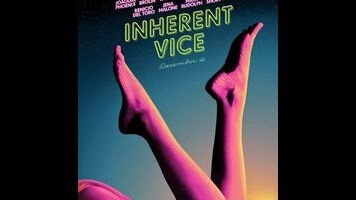P.T. Anderson goes back to the ’70s—and noir themes—with Inherent Vice

Paul Thomas Anderson may have made his name on a dazzling, Scorsesean flow, but ever since Magnolia, he’s boldly staked out thornier, more disorienting turf, despite working in the mainstream. He’s one of the few filmmakers who could get away with the outsize violence of There Will Be Blood’s bowling-alley climax or the uninflected chronological leaps of The Master. His experimentation makes him an ideal fit to adapt the labyrinthine prose of Thomas Pynchon, even if the book in question is the relatively straightforward 2009 novel Inherent Vice.
The material fits well with Anderson’s expanding catalog of American loners and dreamers. As others have pointed out, the director’s three most recent films have each focused on a different period of American history and a different community ethos. Inherent Vice is set in 1970 in the fictitious Gordita Beach, California, a paradise for stoners and dopers at what Sortilège (Joanna Newsom), Doc’s mystically inclined friend, says are “astrologically perilous” times for them.
That’s not without reason: In its paranoid tone and closed-circuit plot—in which minor details keep resurfacing—Inherent Vice evokes a tense moment after the Tate-LaBianca murders when a carful of hippies could suddenly seem like a Mansonoid conspiracy. It’s a spiritual prequel to Boogie Nights, depicting a last gasp of idealism before a crackdown. Here, the death of ’60s counterculture mirrors the porn world’s bubble-bursting transition to video in the earlier film.
Private eye Doc Sportello (Joaquin Phoenix, earning more laughs and emotion with each facial tic than most actors get with torrents of dialogue) is approached by his ex-girlfriend Shasta Fay Hepworth (Katherine Waterston) with a matter related to a real-estate mogul she’s seeing. The plot that unravels involves neo-Nazi bodyguards, a sybaritic dentist (Martin Short), and a recovering addict (Owen Wilson, the cast’s one weak link) who’s been co-opted as an informant by the right. Doc’s mirror image is the “renaissance cop” Bigfoot (Josh Brolin, sporting a hilarious flat-top and clenched manner), with whom he ultimately reaches a sort of druggy détente.
If The Master—a better movie, if only by virtue of being one of the best of this decade so far—riffed on some of the major themes of 1940s film noir (the returning veteran, charlatanism, sexual anxiety), Inherent Vice is closer to Chinatown. The story turns on L.A. land use, the uprooting of minority communities, and government–private sector conspiracies in plain sight. The movie’s shaggy-dog bogeyman is a vertically integrated cartel known as the Golden Fang, which anticipates the Reagan era (or even further ahead) by seeing its customers, addict and ex-addict alike, as an endless source of ancillary revenue. When Doc finds himself in a tight spot, chained to a pipe, it’s significant he’s been drugged not with LSD but with the future ’80s scourge of angel dust.
Anderson has nip-tucked a few of Pynchon’s subplots, reducing a Las Vegas visit to a newspaper headline, ditching a thread involving early computers, and losing some of the author’s more literary flourishes. (A lovely, metaphor-heavy passage in which Doc and a friend visit a motel near a time-zone line is sorely missed.) But on the whole, the film is remarkably faithful.
The fact that perhaps 90 percent of the dialogue comes from Pynchon poses an authorship question that doesn’t exist with Anderson’s other movies. Still, the deftness with comedy and actors are at a level that few filmmakers working today could achieve. Anderson even reveals a flair for sight gags: A moment in which two large packs of heroin are carried across the screen is in the running for the year’s funniest shot.
The director has also played up Shasta’s role, and the sense of doomed romanticism—of an outsider insecure about his past—is purely his. In its graceful superimpositions and its use of water to evoke a more idyllic time (particularly in a rainy flashback set to Neil Young), Inherent Vice is very much a companion piece to The Master.
Shasta alludes to the movie’s theme of unavoidability toward the end of a remarkable one-take monologue, which manages to be erotic and disturbing at once. The contradictory mix of tones is consistent with the rest of the film, which finds menace in gentle slapstick and tenderness in a plot that’s willfully absurd. The closing shot, a parting moment of Anderson’s invention, is pure bliss.